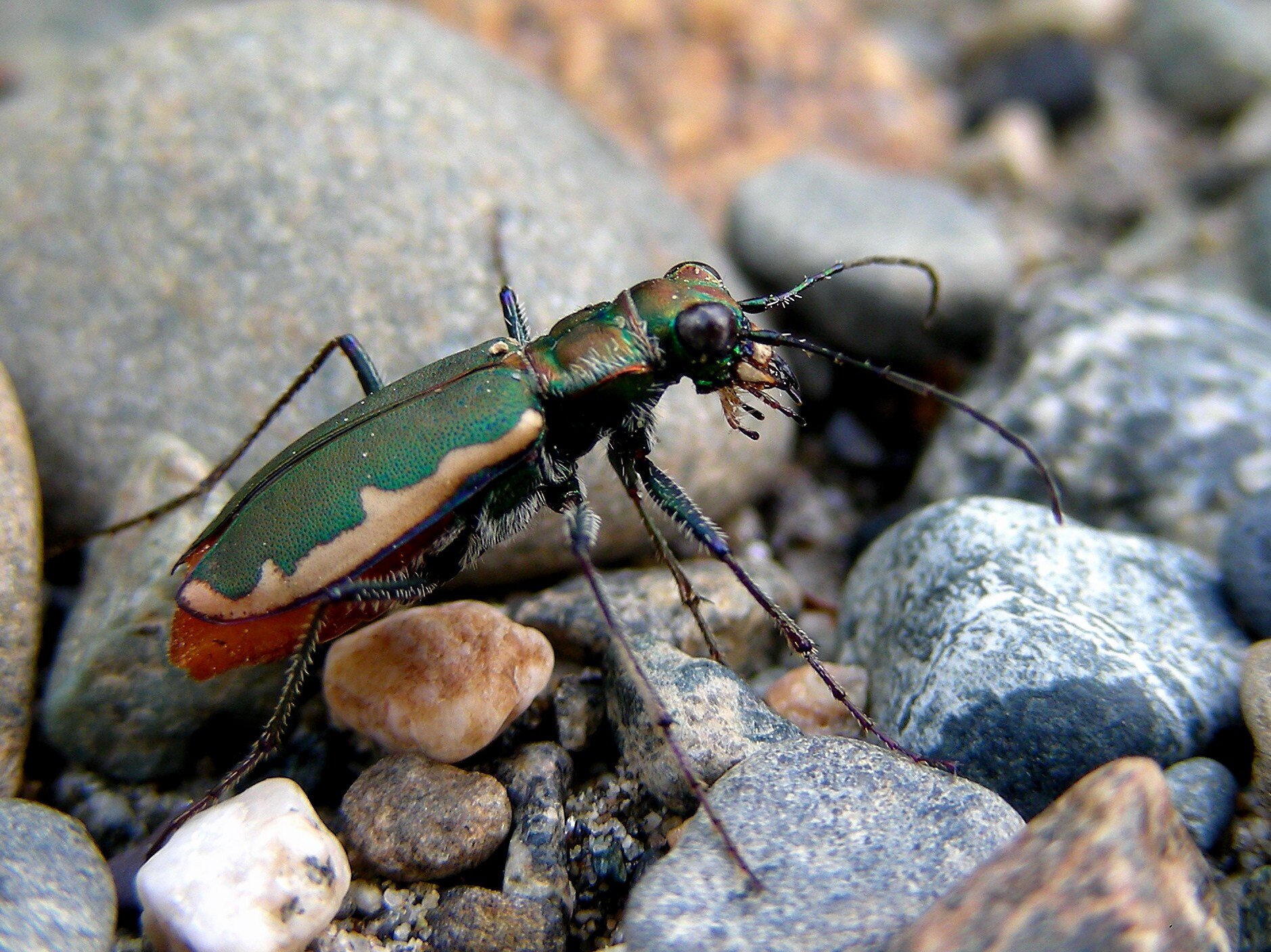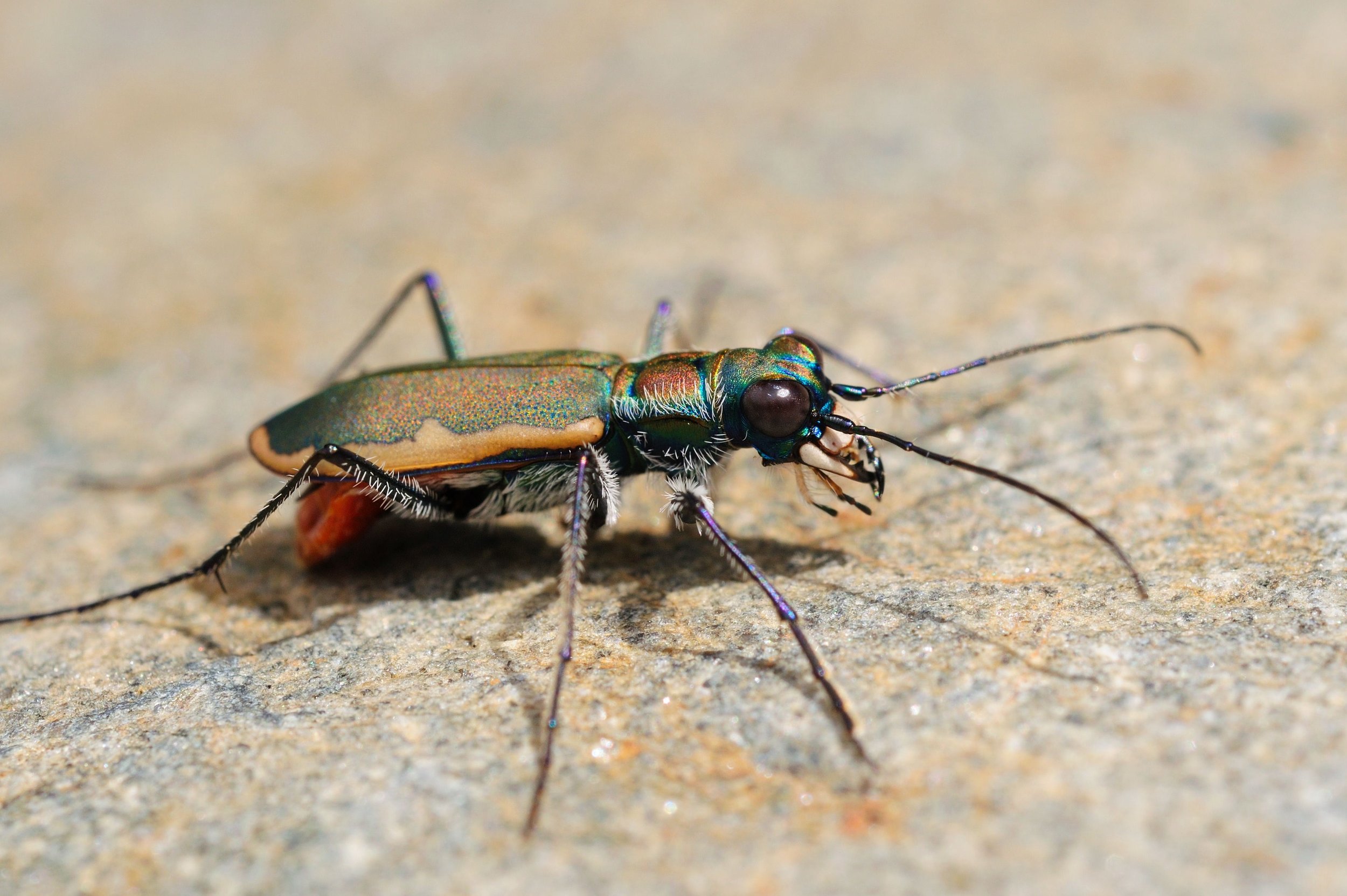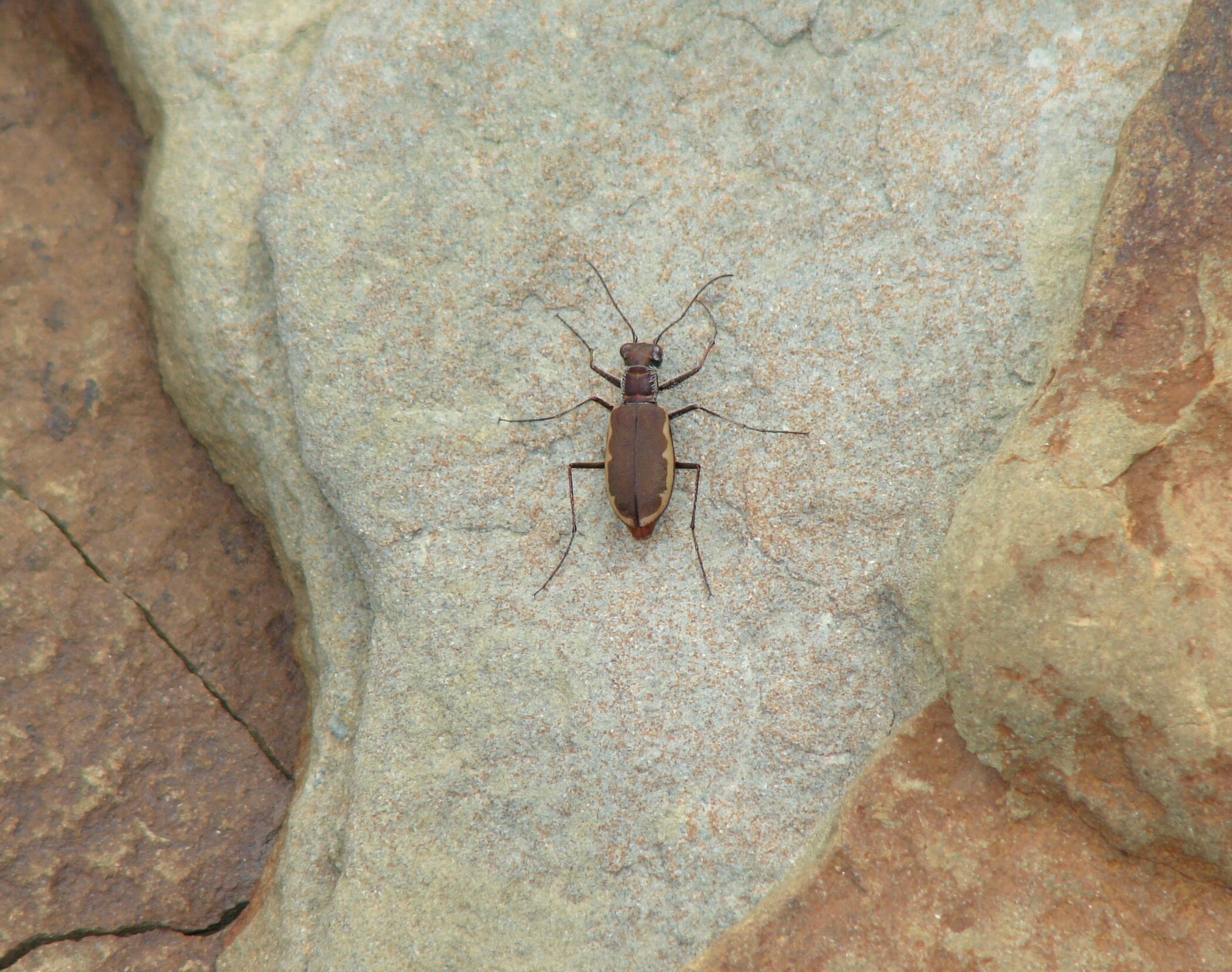(Cicindela marginipennis)
Status: Endangered (SARA); Special Concern (COSEWIC)
This means that without some form of action, they could disappear from Canada or the entire planet.
Identification guide:
Small slender beetle (11-14mm in length).
Cream coloured border along the edge of green, brown, or shiny blue wing covers (various colour morphs).
Red abdomen easily visible during flight.
Habitat & Behaviour
In Canada, the cobblestone tiger beetle (Cicindela marginipennis) is found only in New Brunswick, where it inhabits islands in the Saint John River and cobblestone beaches of Grand Lake. This beetle is found on shorelines of cobbles and coarse gravel, such as the edge of treed islands where spring floods create areas of sparse vegetation.
The beetles likely use these beaches for their entire life cycle, laying eggs in the sand and clay between cobblestones. The beetle’s larvae construct vertical burrows in between large cobblestones for protection, but also for snatching prey that venture too close to the burrow openings. The larval stage may last up to a year before adult beetles emerge, with the life cycle likely lasting two years. As adults, their long legs enable the cobblestone tiger beetle to run down their insect prey at high speeds.
Threats
Because they are only found at few sites in a specialized habitat, the cobblestone tiger beetle is threatened by our activities. Habitat degradation and loss can result from waterfront development, ATV use along beaches, and the encroachment of invasive plant species. Surface runoff with sediment and chemicals (fertilizers and insecticides) can also threaten the beetle and its habitat.
Ways You Can Help
Avoid driving ATVs and other vehicles on shorelines and beaches.
Minimize development impacts through appropriate shoreline setbacks and by avoiding the placement of structures on cobblestone beach.
Minimize use of products that may runoff and contaminate habitat, including salt, fertilizers, and pesticides.
This project was undertaken with the financial support of Environment Canada.
To find out more about Species at Risk conservation, contact our Conservation Manager, Carli Le Roux, below
or by calling (506) 457-2398.




